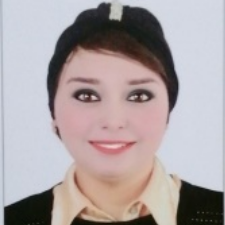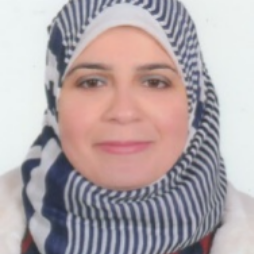International Journal of Intelligent Systems and Applications (IJISA)
IJISA Vol. 16, No. 4, 8 Aug. 2024
Cover page and Table of Contents: PDF (size: 1144KB)
Infrared Images Spectra Multi-class Classification Model Based on Deep Learning
PDF (1144KB), PP.22-38
Views: 0 Downloads: 0
Author(s)
Index Terms
Fourier Transform Infrared, Artificial Intelligence, Deep Learning, Chemometric, Convolutional Neural Network
Abstract
The classification of Fourier Transform Infrared spectra images is crucial in chemometrics. This paper proposes an efficient model based on deep learning approaches for enhancement and classification of the Fourier Transform Infrared Spectra (FTIR) images. The proposed model integrates three deep learning models including ResNet101, EfficientNetB0, and Wavelet Scattering transform (WST) to extract several features from FTIR. Then the obtained features were fused in conjunction with standard statistical feature extraction. It followed by a subsequent classification phase that employs a Convolutional Neural Network (CNN) architecture, which demonstrates high accuracy in classifying the infrared spectra images into six different classes of ligands and their metal complexes. During the training phase, the network’s weights are iteratively updated using the Adam optimization algorithm. This model addresses the challenge of small and imbalanced datasets through an image oversampling process. Using random over-sampling technique, it enhances the training process and overall classification performance. The extracted features were analyzed using t-distributed Stochastic Neighbor Embedding (t-SNE) to visualize high-dimensional data in two dimensions. The results of the proposed model show high classification accuracy of 0.91%, low error rate of 0.08%, a sensitivity of 0.89% and a precision of 0.89%, false positive rate of 0.01%, F1 score of 0.89, Matthews Correlation Coefficient of 0.87 and Kappa of 0.68.
Cite This Paper
Asmaa S. Abdo, Kamel K. Mohammed, Rania Ahmed, Heba Alshater, Samar A. Aly, Ashraf Darwish, Aboul Ella Hassanein, "Infrared Images Spectra Multi-class Classification Model Based on Deep Learning", International Journal of Intelligent Systems and Applications(IJISA), Vol.16, No.4, pp.22-38, 2024. DOI:10.5815/ijisa.2024.04.02
Reference
[1]Marini F., et al., Artificial neural networks in chemometrics: history, examples and perspectives, Micro chem. J. 88 (2) (2008) 178e185.
[2]Wang, X., Ye, S., Hu, W., Sharman, E., Liu, R., Liu, Y., Luo, Y., Jiang, J.: Electric Dipole Descriptor for Machine Learning Prediction of Catalyst Surface–Molecular Adsorbate Interactions. Journal of the American Chemical Society. 142, 7737–7743 (2020). https://doi.org/10.1021/jacs.0c01825.
[3]Everall, N. J.; Chalmers, J. M.; Griffiths, P. R. Vibrational Spectroscopy of Polymers: Principles and Practice; Wiley: Chichester, (2007).
[4]Brandt, J., Mattsson, K., Hassellöv, M.: Deep Learning for Reconstructing Low-Quality FTIR and Raman Spectra─A Case Study in Microplastic Analyses. Analytical Chemistry. 93, 16360–16368 (2021). https://doi.org/10.1021/acs.analchem.1c02618.
[5]Fine, J.A., Rajasekar, A.A., Jethava, K.P., Chopra, G.: Spectral deep learning for prediction and prospective validation of functional groups. Chem. Sci. 11, 4618–4630 (2020). https://doi.org/10.1039/C9SC06240H.
[6]Oren O., Gersh B.J., Bhatt D.L., Artificial intelligence in medical imaging: switching from radiographic pathological data to clinically meaningful endpoints, Lancet Digit. Heal. 2 (9) (2020) e486, https://doi.org/10.1016/S2589-7500(20) 30160-6.
[7]Gioux, S., Mazhar A., Cuccia D.J., Spatial frequency domain imaging in 2019: principles, applications, and perspectives, J. Biomed. Opt. 24 (7) (2019) 1–18, https://doi.org/10.1117/1.JBO.24.7.071613.
[8]Sarvamangala, D.R., Kulkarni, R. V: Convolutional neural networks in medical image understanding: a survey. Evolutionary Intelligence. 15, 1–22 (2022). https://doi.org/10.1007/s12065-020-00540-3.
[9]Akujuobi, Cajetan M. Wavelets and wavelet transform systems and their applications. Berlin/Heidelberg, Germany: Springer International Publishing, 2022.
[10]Varshney, A., Kolhe, R., Gatne, S., Ingale, V. V: Arrhythmia Classification of ECG Signals Using Undecimated Discrete Wavelet Transform. In: 2022 IEEE 7th International conference for Convergence in Technology (I2CT). pp. 1–5 (2022). https://doi.org/10.1109/I2CT54291.2022.9824433.
[11]Bruna J.and Mallat S., “Invariant Scattering Convolution Networks,” (2012), doi: https://doi.org/10.48550/.
[12]Lan, T., Zeng, Z., Han, L., Zeng, J.: Seismic Data Denoising Based on Wavelet Transform and the Residual Neural Network. Applied Sciences. 13, (2023). https://doi.org/10.3390/app13010655.
[13]Raji M.F. et al., A New Approach for Enhancing the Services of the 5G Mobile Network and IOT-Related Communication Devices Using Wavelet-OFDM and Its Applications in Healthcare, Sci. Program. 2020 ( 2020) 1–13, https://doi.org/ 10.1155/2020/3204695.
[14]Kustiyo A., Buono A., Faqih A., Priandana K., Analysis on Dimensionality Reduction Techniques for Sub-Seasonal to Seasonal Rainfall Prediction, in: in 2021 International Conference on Computer System, Information Technology, and Electrical Engineering (COSITE), (2021), pp. 156–160, https://doi.org/10.1109/ COSITE52651.2021.9649588.
[15]Gunasekaran, S., Rajan, S., Moses, L., Vikram, S., Subalakshmi, M., Shudhersini, B.: Wavelet Based CNN for Diagnosis of COVID 19 using Chest X Ray. IOP Conference Series: Materials Science and Engineering. 1084, 12015 (2021). https://doi.org/10.1088/1757-899X/1084/1/012015.
[16]Fernandes F.C.A., van Spaendonck R.L.C., Burrus C.S., A new framework for complex wavelet transforms, IEEE Trans. Signal Process. 51 (7) (2003) 1825–1837, https://doi.org/10.1109/TSP.2003.812841.
[17]Soro B., Lee, A Wavelet Scattering Feature Extraction Approach for Deep Neural Network Based Indoor Fingerprinting Localization, Sensors 19 (2019) 1790, https://doi.org/10.3390/s19081790.
[18]Tan, A., Wang, Y., Guo, T., Hou, X., Wang, S., Zhao, Y.: Quantitative analysis of multi-optical length NIR spectroscopy based on quaternion parallel feature extraction method. Infrared Physics & Technology. 119, 103964 (2021). https://doi.org/https://doi.org/10.1016/j.infrared.2021.103964.
[19]Chen, X., Zhou, J., Yuan, L., Huang, G., Chen, X., Shi, W.: Spectroscopic Identification of Environmental Microplastics. IEEE Access. PP, 1 (2021). https://doi.org/10.1109/ACCESS.2021.3063293.
[20]Back, H. de M., Vargas Junior, E.C., Alarcon, O.E., Pottmaier, D.: Training and evaluating machine learning algorithms for ocean microplastics classification through vibrational spectroscopy. Chemosphere. 287, 131903 (2022). https://doi.org/10.1016/j.chemosphere.2021.131903.
[21]Yan, X., Cao, Z., Murphy, A., Qiao, Y.: An Ensemble Machine Learning Method for Microplastics Identification with FTIR Spectrum. Journal of Environmental Chemical Engineering. 10, 108130 (2022). https://doi.org/10.1016/j.jece.2022.108130.
[22]Zhang L., Ding X., Hou R., Classification modeling method for near-infrared spectroscopy of tobacco based on multimodal convolution neural networks, J Anal Methods Chem. 2020 (2020) 1–13.
[23]McGill, C., Forsuelo, M., Guan, Y., Green, W.H.: Predicting Infrared Spectra with Message Passing Neural Networks. Journal of Chemical Information and Modeling. 61, 2594–2609 (2021). https://doi.org/10.1021/acs.jcim.1c00055.
[24]Chen, H., Chen, A., Xu, L., Xie, H., Qiao, H., Lin, Q., Cai, K.: A deep learning CNN architecture applied in smart near-infrared analysis of water pollution for agricultural irrigation resources. Agricultural Water Management. 240, 106303 (2020). https://doi.org/https://doi.org/10.1016/j.agwat.2020.106303.
[25]Jung H., Kim Y., Jang H., Ha N., Sohn K., Unsupervised deep image fusion with structure tensor representations, IEEE Trans Image Process. 29 (2020) 3845–3858, https://doi.org/10.1109/TIP.2020.2966075.
[26]Ailing Tan a , Yajie Zuo a , Yong Zhao b,* , Xiaohang Li a , Haijie Su a , Alan X. Wang, Qualitative analysis for microplastics based on GAF coding and IFCNN image fusion enabled FITR spectroscopy method, Infrared Physics and Technology, (2023).
[27]EL-Gammal, O.A., Alshater, H., El-Boraey, H.A.: Schiff base metal complexes of 4-methyl-1H-indol-3-carbaldehyde derivative as a series of potential antioxidants and antimicrobial: Synthesis, spectroscopic characterization and 3D molecular modeling. Journal of Molecular Structure. 1195, 220–230 (2019).
[28]Aly, S.A., Hassan, S.S., El-Boraey, H.A. et al. Synthesis, Biological Activity, and the Effect of Ionization Radiation on the Spectral, XRD, and TGA Analysis of Cu(I), Cu(II), Zn(II), and Cd(II) Complexes. Arab J Sci Eng (2023). https://doi.org/10.1007/s13369-023-07988-2.
[29]Aly, S.A.: Physico-chemical study of new ruthenium (III), Pd (II) and Co (II) complexes, DNA binding of Pd (II) complex and biological applications. Journal of Radiation Research and Applied Sciences. 11, 163–170 (2018).
[30]Aly, S.A., Elembaby, D.: Synthesis, spectroscopic characterization and study the effect of gamma irradiation on VO2+, Mn2+, Zn2+, Ru3+, Pd2+, Ag+ and Hg2+ complexes and antibacterial activities. Arabian Journal of Chemistry. 13, 4425–4447 (2020).
[31]Abdalla, E.M., Hassan, S.S., Elganzory, H.H., Aly, S.A., Alshater, H.: Molecular docking, dft calculations, effect of high energetic ionizing radiation, and biological evaluation of some novel metal (Ii) heteroleptic complexes bearing the thiosemicarbazone ligand. Molecules. 26, 5851 (2021).
[32]Aly, S.A., Hassan, S.S., Eldourghamy, A.S., Badr, E.E., El‐Salamoney, M.A., Hassan, M.A., Elganzory, H.H.: Synthesis, characterization, XRD, SEM, DNA binding, and effect of γ‐irradiation of some new Ni (II) and Co (II) complexes with thiosemicarbazone ligand: In vitro antimicrobial and antioxidant activities. Applied Organometallic Chemistry. 36, e6727 (2022).
[33]He, K., Zhang, X., Ren, S., Sun, J.: Deep residual learning for image recognition. Proceedings of the IEEE Computer Society Conference on Computer Vision and Pattern Recognition. 2016-Decem, 770–778 (2016). https://doi.org/10.1109/CVPR.2016.90.
[34]Gupta, A., Anjum, Gupta, S., Katarya, R.: InstaCovNet-19: A deep learning classification model for the detection of COVID-19 patients using Chest X-ray. Applied Soft Computing. 99, (2021). https://doi.org/10.1016/j.asoc.2020.106859.
[35]Ardakani, A.A., Kanafi, A.R., Acharya, U.R., Khadem, N., Mohammadi, A.: Application of deep learning technique to manage COVID-19 in routine clinical practice using CT images: Results of 10 convolutional neural networks. Computers in Biology and Medicine. 121, 103795 (2020). https://doi.org/10.1016/j.compbiomed.2020.103795.
[36]Nanni, L., Manfè, A., Maguolo, G., Lumini, A., Brahnam, S.: High performing ensemble of convolutional neural networks for insect pest image detection. Ecological Informatics. 67, (2022). https://doi.org/10.1016/j.ecoinf.2021.101515.
[37]Tan, M., Le, Q. V.: EfficientNet: Rethinking model scaling for convolutional neural networks. 36th International Conference on Machine Learning, ICML (2019), 10691–10700 (2019).
[38]Razali, N.F., Isa, I.S., Sulaiman, S.N., Noor, N.K., Osman, M.K.: CNN-Wavelet scattering textural feature fusion for classifying breast tissue in mammograms. Biomedical Signal Processing and Control. 83, 104683 (2023). https://doi.org/10.1016/j.bspc.2023.104683.
[39]Khemani, V., Azarian, M.H., Pecht, M.G.: Learnable Wavelet Scattering Networks: Applications to Fault Diagnosis of Analog Circuits and Rotating Machinery. Electronics (Switzerland). 11, (2022). https://doi.org/10.3390/electronics11030451.
[40]Renukadevi, T., Saraswathi, K., Prabu, P., Venkatachalam, K.: Brain image classification using time frequency extraction with histogram intensity similarity. Computer Systems Science and Engineering. 41, 645–660 (2022). https://doi.org/10.32604/csse.2022.020810.
[41]Kurniati, F.T., Manongga, D.H.F., Sediyono, E., Yulianto, S., Prasetya, J.: Object Classification Model Using Ensemble Learning with Gray- Level Co-Occurrence Matrix and Histogram Extraction. Jurnal Ilmiah Teknik Elektro Komputer dan Informatika (JITEKI). 9, 793–801 (2023). https://doi.org/10.26555/jiteki.v9i3.26683.
[42]Dash, S., Senapati, M.R.: Gray level run length matrix based on various illumination normalization techniques for texture classification. Evolutionary Intelligence. 14, 217–226 (2021). https://doi.org/10.1007/s12065-018-0164-2.
[43]Tang, Z., Zhang, H., Pun, C., Yu, M., Yu, C., Zhang, X.: Robust image hashing with visual attention model and invariant moments. https://doi.org/10.1049/iet-ipr.2019.1157.
[44]Zhu, T., Lin, Y., Liu, Y.: Synthetic minority oversampling technique for multiclass imbalance problems. Pattern Recognition. 72, 327–340 (2017). https://doi.org/10.1016/j.patcog.2017.07.024.
[45]Ogundokun, R.O., Maskeliunas, R., Misra, S., Damaševičius, R.: Improved CNN Based on Batch Normalization and Adam Optimizer. Lecture Notes in Computer Science (including subseries Lecture Notes in Artificial Intelligence and Lecture Notes in Bioinformatics). 13381 LNCS, 593–604 (2022). https://doi.org/10.1007/978-3-031-10548-7_43.
[46]Chuan T S, and Zhu S., "Binary search of the optimal cut-point value in ROC analysis using the F1 score." Journal of Physics: Conference Series. Vol. 2609. No. 1. IOP Publishing, 2023.
[47]Lu, F., Liu, G.H.: Image retrieval using contrastive weight aggregation histograms. Digital Signal Processing: A Review Journal. 123, 103457 (2022). https://doi.org/10.1016/j.dsp.2022.103457.
[48]Zhang, H., Wang, P., Gao, X., Qi, Y., Gao, H.: Out-of-sample data visualization using bi-kernel t-SNE. Information Visualization. 20, 20–34 (2021). https://doi.org/10.1177/1473871620978209.






